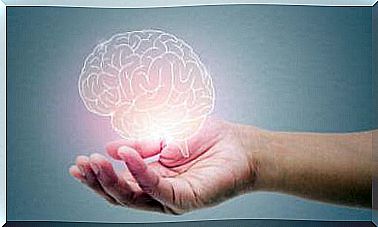Can Attitudes Be Changed?

The attitude is mentioned many times in our day to day. From individuals in our work who “don’t want to change their attitude” to kids in the classroom whose “attitude is bad.” However, what does psychology mean by attitude? Can you have a good or bad attitude? Can these vary? The answer is yes: attitudes can change, but first you have to understand what they are.
In this article, we will see the concept of attitude from different theoretical frameworks to understand its role in the functioning of the human being. In addition, we will study what may be the best option in order to change negative or dysfunctional attitudes, if this can be carried out.

What is an attitude?
Allport, an American psychologist, considered attitudes as:
Attitudes, beyond simple opinions, are considered from the psychology of persuasion as a mere organization of beliefs, feelings and behavioral tendencies that remain stable over time. This organization is established towards objects, groups of people, symbols, beliefs or events.
As man is a zoon politikon , that is, a social animal, attitudes also allow the individual to have a general evaluation of a person. This evaluation can be negative or positive. Therefore, we can say that attitudes are evaluations. For example, the attitude towards oneself is called self-esteem.
Hogg and Vaughan (2008) concluded that, without attitudes, people would have difficulty constructing and reacting to events. He would also be less adept at making decisions and managing socially.
What is an attitude for?
Katz argued that there are very different kinds of attitudes, but they all serve a function. He identified the following:
- Knowledge.
- Instrumentality : attitudes can be a means to an end.
- Defense of the self : the attitudes also allow to protect the self-esteem of the person.
- Expression of values : it allows people to establish and communicate what they like or dislike or what they are most identified with.
Fazzio (1989) studied how the main function of any kind of attitude is utilitarian : the appreciation of an object. Having an attitude makes it easier for the person to be oriented towards that object and a quick response according to its demands.
On the other hand, an attitude allows not investing energy whenever we relate to an object, since we already have an idea of how to do it; we have done it in the past. Therefore, an attitude allows us to be more likely to have positive experiences and minimizes those of having a negative one, since we know which stimuli we like and which we do not previously. We act accordingly to our attitudes born of our experience.
How to change attitudes?
A person’s attitude, and one’s own, can be changed. In fact, the psychology of persuasion finds two great mechanisms to get a person to change their attitude:
- Give you what is prototypically considered a persuasive message. This means that a good way to change someone’s attitude is to give them information about something or someone who maintains the attitude to change.
- Request that negative or positive aspects be written about the attitude you hold or want you to adopt. We can ask the person to generate that information without having to give it explicitly. Self-generation of arguments, without the mediation of any other person, can lead to a process of self-persuasion. This self-persuasion can be set in one direction or another.
What never to do when trying to convince
From the psychology of persuasion they warn us: despite the nature and veracity of the information, many times we form an impression that will be the seed of a negative attitude. This is not so much related to the quality of the arguments as to the force with which they are expressed.
Thus, it is important to use strong arguments ; otherwise, weak arguments can produce the opposite effect to what we intend: that the person does not change his attitude or that he does it in the opposite direction to the one intended.
Arguments have to be strong for the listener, not so strong for the speaker. If in debate the person begins to counter-argue, it means that the force of the persuasive messages has not been enough.
Many times those arguments are solid for us, but the person in front does not think the same; our arguments are not convincing to her. At that time, the fatal mistake of insisting with similar arguments is usually made , because we think that he is not understanding us; He does, but he doesn’t understand them like we do.

Can you persuade someone who does not listen to what we say?
For a long time it was thought that changing people’s attitudes was impossible if those people did not expose themselves to and understand the message in question. The latest research has something to say: it can, certainly, it can.
We can persuade the person to change the attitudes they have through heuristics. Heuristic information processing responds to the human need for a certain cognitive economy.
People seek to generate the minimum of effort in their cognitions, and for that reason they use attributional, heuristic, schema and category biases, since the effort involved in processing all the information in the environment is unapproachable.
Playing within the game: the heuristic rules
A tired person will tend to process information less, to pay less attention to an argument. This can happen with a child, with a co-worker, or even with friends.
For this reason, we must understand the heuristic processing of the person, especially in low processing conditions. Some examples of heuristic rules are:
- “If an expert says so, I agree.”
- “If the majority say it, it will be for something.”
- “If it’s tall, I like it.”
- “If Jose wears it, I want it.”
The heuristic rule establishes the change of attitude without even generating thoughts. Knowing therefore the heuristic processing of the person can be the key to achieve a change in their attitude.
Conclusions: resistance to persuasion
Persuasion may not be enough to bring about an attitude change. In fact, there are certain factors that can make persuasion less effective.
The staff reactance is a fact and is not passively accept attempts to influence others. This defense mechanism is useful against the persuasive mechanisms to which we are continually subjected. Therefore, persuasion must be subtle, and not rude.
Another factor that can influence the effectiveness of persuasion is that the person is alerted or detects the persuasion attempt. In this case, the results will be weaker.
Finally, people also have a selective avoidance of those messages that they know can become persuasive to them. They tend to think that if they do not expose themselves, they will not be convinced – in many cases, it would be better to say manipulated.









